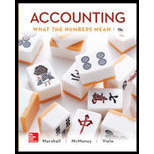
Concept explainers
Concept Introduction:
Variances: A Variance is a difference between actual and standard figures. There are two main types of Variances as follows:
- Price variance : Price variance shows the difference between standard price and actual price.
- Quantity variance: Quantity variance shows the difference between standard quantity and actual quantity.
Direct labor variances: Direct labor variances refer to the difference between the standard direct labor cost and actual direct labor cost incurred. Direct labor cost variances are categorized into following categories:
- Direct labor Rate variance : this variance shows the difference of standard rate and actual rate of labor. The formula to calculate this variance is as follows:
- Direct labor efficiency variance: this variance shows the difference of standard usage and actual usage of labor. The formula to calculate this variance is as follows:
- Direct labor cost variance: this variance shows the difference of standard cost and actual cost of labor. The formula to calculate this variance is as follows:
Or
Direct Labor cost variance = Actual Labor cost − Standard Labor Cost
Requirement-a:
To Calculate:
The actual direct labor rate per hour
Concept Introduction:
Standard Costing System: Standard Costing system allows estimating the costs, preparing budgets for future periods, and analyzing the performance by comparing the budgets with actual results and find variances.
Variances: A Variance is a difference between actual and standard figures. There are two main types of Variances as follows:
Direct labor variances: Direct labor variances refer to the difference between the standard direct labor cost and actual direct labor cost incurred. Direct labor cost variances are categorized into following categories:
Or
Direct Labor cost variance = Actual Labor cost − Standard Labor Cost
Requirement-b:
To Calculate:
The dollar amount of labor efficiency variance
Concept Introduction:
Standard Costing System: Standard Costing system allows estimating the costs, preparing budgets for future periods, and analyzing the performance by comparing the budgets with actual results and find variances.
Variances: A Variance is a difference between actual and standard figures. There are two main types of Variances as follows:
Direct labor variances: Direct labor variances refer to the difference between the standard direct labor cost and actual direct labor cost incurred. Direct labor cost variances are categorized into following categories:
Or
Direct Labor cost variance = Actual Labor cost − Standard Labor Cost
Requirement-c:
To Calculate:
The Standard Direct labor hours allowed for actual level of activity
Want to see the full answer?
Check out a sample textbook solution
Chapter 15 Solutions
Accounting: What the Numbers Mean
- Accountingarrow_forwardJatka Corporation estimates the overhead costs for the next year will be $7,650,000 for indirect labor and $295,800 for factory utilities. The company uses machine hours as its overhead allocation base. If 475,000 machine hours are planned for the next year, what is the company's plantwide overhead rate? (Round to two decimal places.) a. $0.06 per machine hour b. $16.73 per machine hour c. $14.21 per machine hour d. $0.64 per machine hourarrow_forwardFinancial accountingarrow_forward

 AccountingAccountingISBN:9781337272094Author:WARREN, Carl S., Reeve, James M., Duchac, Jonathan E.Publisher:Cengage Learning,
AccountingAccountingISBN:9781337272094Author:WARREN, Carl S., Reeve, James M., Duchac, Jonathan E.Publisher:Cengage Learning, Accounting Information SystemsAccountingISBN:9781337619202Author:Hall, James A.Publisher:Cengage Learning,
Accounting Information SystemsAccountingISBN:9781337619202Author:Hall, James A.Publisher:Cengage Learning, Horngren's Cost Accounting: A Managerial Emphasis...AccountingISBN:9780134475585Author:Srikant M. Datar, Madhav V. RajanPublisher:PEARSON
Horngren's Cost Accounting: A Managerial Emphasis...AccountingISBN:9780134475585Author:Srikant M. Datar, Madhav V. RajanPublisher:PEARSON Intermediate AccountingAccountingISBN:9781259722660Author:J. David Spiceland, Mark W. Nelson, Wayne M ThomasPublisher:McGraw-Hill Education
Intermediate AccountingAccountingISBN:9781259722660Author:J. David Spiceland, Mark W. Nelson, Wayne M ThomasPublisher:McGraw-Hill Education Financial and Managerial AccountingAccountingISBN:9781259726705Author:John J Wild, Ken W. Shaw, Barbara Chiappetta Fundamental Accounting PrinciplesPublisher:McGraw-Hill Education
Financial and Managerial AccountingAccountingISBN:9781259726705Author:John J Wild, Ken W. Shaw, Barbara Chiappetta Fundamental Accounting PrinciplesPublisher:McGraw-Hill Education





